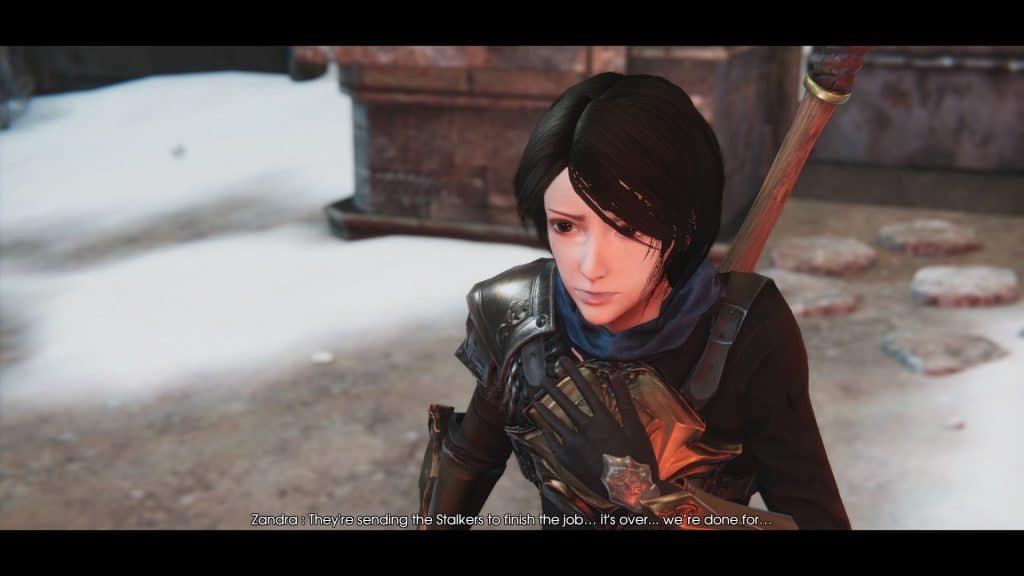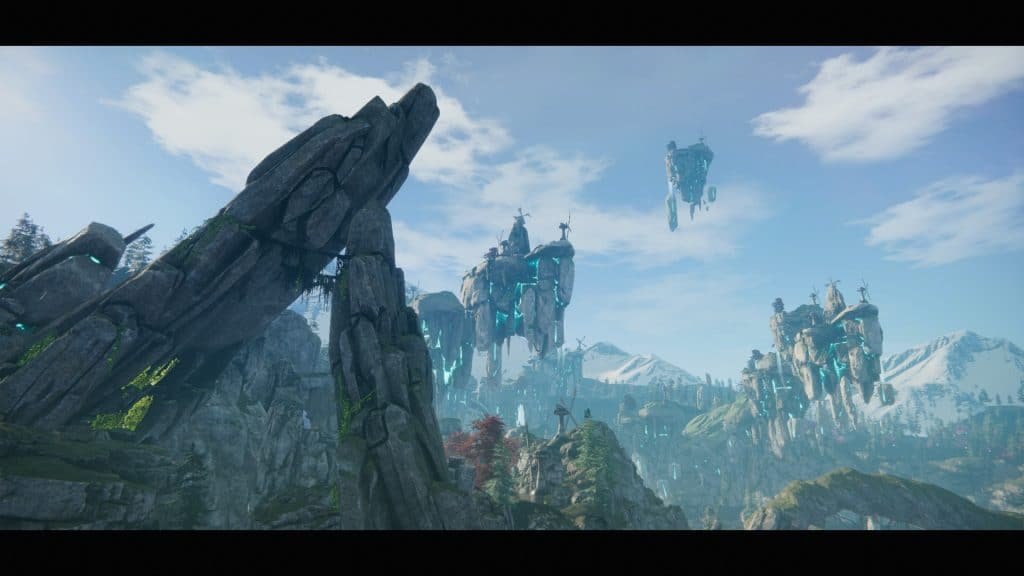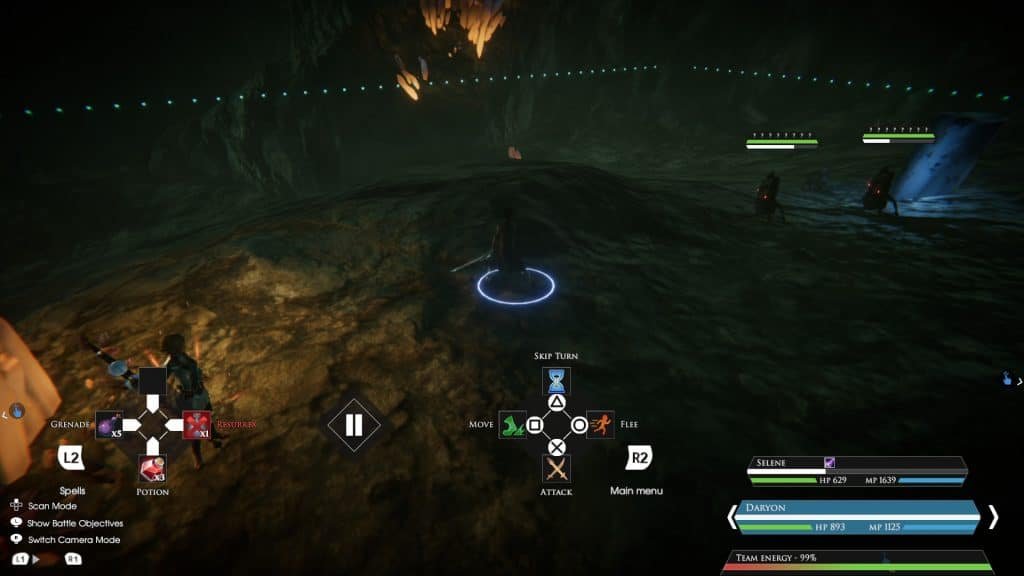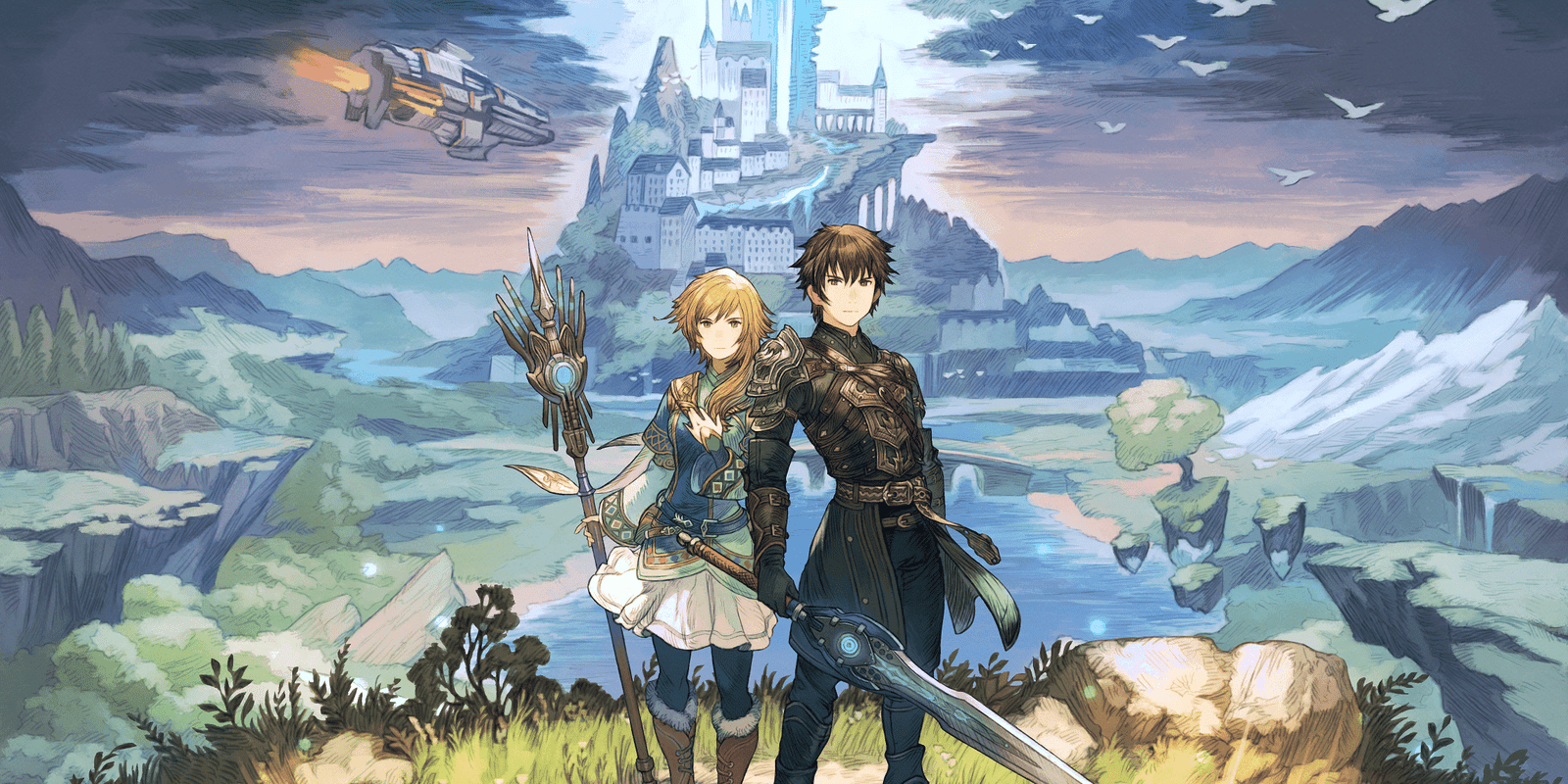Edge of Eternity is available on Steam, GoG, and Epic Games Store. It launces on consoles later this year.
A code for this game was provided to Geek to Geek Media by Dear Villagers and Tinsley PR.
The fledgling Midgar Studio first presented Edge of Eternity to the world on Kickstarter a great many years ago now.
To say that its design has changed since then would be… selling things short.
But one thing that hasn't changed throughout is the team's core mission. They wanted to deliver the experience of a turn-based Japanese Role-Playing Video Game though their own eyes. And from a strategy-forward take on the archetypical Active Time Battle system to hammy protagonists, that's still the clear vision behind Edge of Eternity.
So how well does it hold up when you put it by the same yardsticks?
Well, let's take one of the common elements people love to pick out about JRPGs as a genre – they take a while to get the ball rolling. Seriously, Persona 3 looks like an entirely different game an hour in than it does with five, let alone a dozen hours on the clock. So what does that kind of progression look like for a “JRPG” largely developed in France?
Let's get some snapshots at each of these times to see how the game progresses:
Game Clock – 1:03:12
I have an entire two-page notebook spread scrawled out already.
First things first, though: the key art for this game is absolutely gorgeous – just look at the banner at the top of this article. Good stuff, right?
And the menus make a great first impression. I'm the sort who likes to tinker with all the settings of my new toy before I ever use them once. Most JRPGs – I'm going to be frank with you – are lousy at this. Many don't even let you control the audio balance between music and sound effects.
Edge of Eternity is already one-upping its forebears here. I can scale the size of interface elements – including subtitle size – alleviating accessibility issues. I can force it to use a specific input device. I can fine-tune the battle difficulty on a scale of 1 to 100. That's rare to find in any game, period.
So, on a first impression, we're doing amazing.
Then I start a new game.

It's a little rough.
We start out with an unseen narrator regaling the history of a war to us. In the background are… very slow-moving spaceships. Unusual for a JRPG, which makes them intriguing! Or, they would be. After the next two minutes of monologue, the game is still holding that same unmoving shot. It's… a little static.
And when we hard-cut down to an outpost on the planet's surface, the characters themselves emote just a bit better. They poke fun at the character's giant sword, a joking irony (which won't hold for long). And despite their stiff movements, the plate metal in their armor manages to bend to their chest when they turn to quip to each other.
An Early Defense
I want to couch this right out of the gate: it's really hard to make video games, especially grand-in-scope titles with wide worlds and epic stories.
That Midgar Studio tried to do this with fifteen developers, in the late twenty-teens, is incredibly impressive; they're punching solidly above their weight class.
And, well, it shows.
The tutorial felt so heavily-guided that I was hardly learning the flow of battle. I ended up in a state where some-but-not-all of my controller inputs registered. And some of the early dialogue was… rocky, both in its direction and the script itself.
There's a game-design axiom supposedly-codified by the likes of Shigeru Miyamoto and John Romero: “Design your first level last”. Supposedly it lets you put your best foot forward, codifying everything you've learned and packaging it in the most attractive way to a new player.
I don't think Midgar Studio had this benefit, considering the game has been in Early Access for some time now. They've been laying track as they go along, and that makes for a bit of a rocky start. Obviously-scripted battles. Tooltips overlapping with the prescribed tutorial messages. Rough character animations on a party with haphazard personalities.
But I'm willing to give them the benefit of the doubt here. I'm basically seeing this game's larva form, after all. Big games can take some time to open up and come into their own, and it's hard to judge against level-one characters on a single road. But what little I can see – that positioning and timing will be key to success in battle – has my attention.
Still, it took me half an hour to be able to open a pause menu. Slow start.

Game Clock – 04:58:45
Either I've softened up on this game, or its rough edges are round off once it's been on the road a while.
I'm still having my issues with it, mind you. That the game will only track one mission at a time is a particular bugbear – though few are complex enough to really warrant that. The game still jumps from one area to another with hard transitions and little connective tissue. And I still have yet to acquire a third regular party member. Tactical gameplay is just less fun when you only have one or two pieces to move.
But because I've broken out into “the game proper”, I'm starting to see what it can really do well.
My big takeaway is the Party Energy meter, which is super-elegant and I want to see other games shamelessly borrow it. When out of battle, your characters don't have HP or MP. Every single battle you enter, you're fully topped-off, ready to burn wild boars down like the trash they are. Go ahead – charge in hard and let your magic-users drop thunderbolts, wild and free. Whatever you use up, the game will refill using the shared meter, so you'll largely pace yourself against a single encounter's “Health & Mana Budget” rather than how many elixirs you can afford overall.
Any game that can let me use magic with impunity is getting a thumbs-up in my book.
It's Getting There.

There are other little areas where the Midgar Studio is clearly taking an outside eye to some age-old gameplay hang-ups, too. It takes almost no time to swipe herbs from a bush or armor from a chest; you hardly have to break your run. The character portraits used in most cutscenes from here on out are good and expressive – they even take after the game's concept art in a nice way.
I very much appreciate the game's approach to puzzles, at that. It asks you to move characters using the in-game battle system, operating levers and machinery in a logical sequence to progress. It isn't overly complicated, but it does feel more in-step core gameplay rather than, y'know, asking the player to suddenly play a memorization game to pass a troll's bridge or what have you.
But there are still some pain points here. The first major city made my PC fans whirr in protest – granted, it was June-Hot that day and my hardware is a couple years stale. The more endearing morsels of characterization are squirreled away in one-off scenes, saved for when you rest at an inn. And after 2020, its handling of a pandemic in-story feels a little retrograde.
Edge of Eternity is showing more of its true colors now, though. The dialogue is cheesy, but that's part of the territory. Random encounters are broken up just enough that I feel engaged when they give me a “slay this enemy last” mini-objective. And its mish-mash flavor of traditional fantasy with light science-fantasy elements is growing on me.
I can ride a five-hundred-pound cat as a mount, and that's pretty cool. I do wish I had a full party of characters at this point, though.
Game Clock – 12:01:26
Twelve hours. Half of a full day spent scouring Heryon for a cure to The Corrosion.
I think I've finally found the game I was maybe expecting Edge of Eternity would be.
When I saw it in trailers, I wasn't thinking of blockbuster JRPG releases on today's consoles – that comparison just wouldn't be fair. Its art style and moment-to-moment gameplay were calling to mind a more nostalgic generation. Even the legendary Yasunori Mitsuda‘s score brought me back to older, more formative titles rather than his more recent work.
What Edge of Eternity turns out to be, at least for me, is “what if a PS2 game was released today?”
I don't mean that in as a put-down. I love to chow down on some old comfort food, and that seems to be the order of the day. And, for this team, that's an appropriate bar to try and hit. Doing so with hindsight lets them update bits and pieces that game design has evolved past in the time since – though it's also allowed the snags that we associate with “Early Access” titles to come into the fold, too.
And that's why I'm finding it hard to get a grip on the game.
The more I play, the more uneven it is. There's a pair of Pinky-and-the-Brain enemies who show up in early chapter two, and they're insufferable. Then I enter the next town, and there's a genuinely fun bit of banter that manages to slip a “your mom” joke into banter about Theocracy. I get to tinker with fully-reversible tech trees on a new sword, but as of Chapter 3, I still don't have a full party to play with.

So, where am I at?
It'd be irresponsible not to say that the Edge of Eternity is still really rough around the edges, sure. There are elements like the crafting and side-missions that I'd be happy without. The game's engine seems to to barely be keeping up with itself at times. Some of the dialogue walks itself in a circle.
But it's hardly offensive. I've been enjoying churning through enemies at times, fine-tuning the difficulty to find one that's just engaging enough to not make travel exhausting. Its mixed bag of a script feels like a stylistic callback to cheesy JRPG dialogue of the PS1 and PS2 generations.
It's a lot. A lot good, and a lot to be found wanting, but mostly it's just a lot. And it's why, despite my frustrations, I don't think I'm quite done with it yet.
Because Edge of Eternity keeps getting better. Each chapter feels like its presentation is better than the last, and adds just enough to its gameplay and story context to keep me on the line.
If I was playing one of those older JRPGs that Edge of Eternity harkens back to, I'd be in a pretty comfortable groove at hour twelve. And I'm comfortable with this game at a dozen hours, but I don't feel like I'm “in a groove”.
Part of that is the haphazard pacing, sure. But part of it is knowing that Edge of Eternity is still trying to reach even higher. Each chapter very literally builds and expands on the last. And while I don't think it can completely catch up now to what its inspirations did back in the day, it's still aiming that high, anyway.
I want to see how close it gets.

